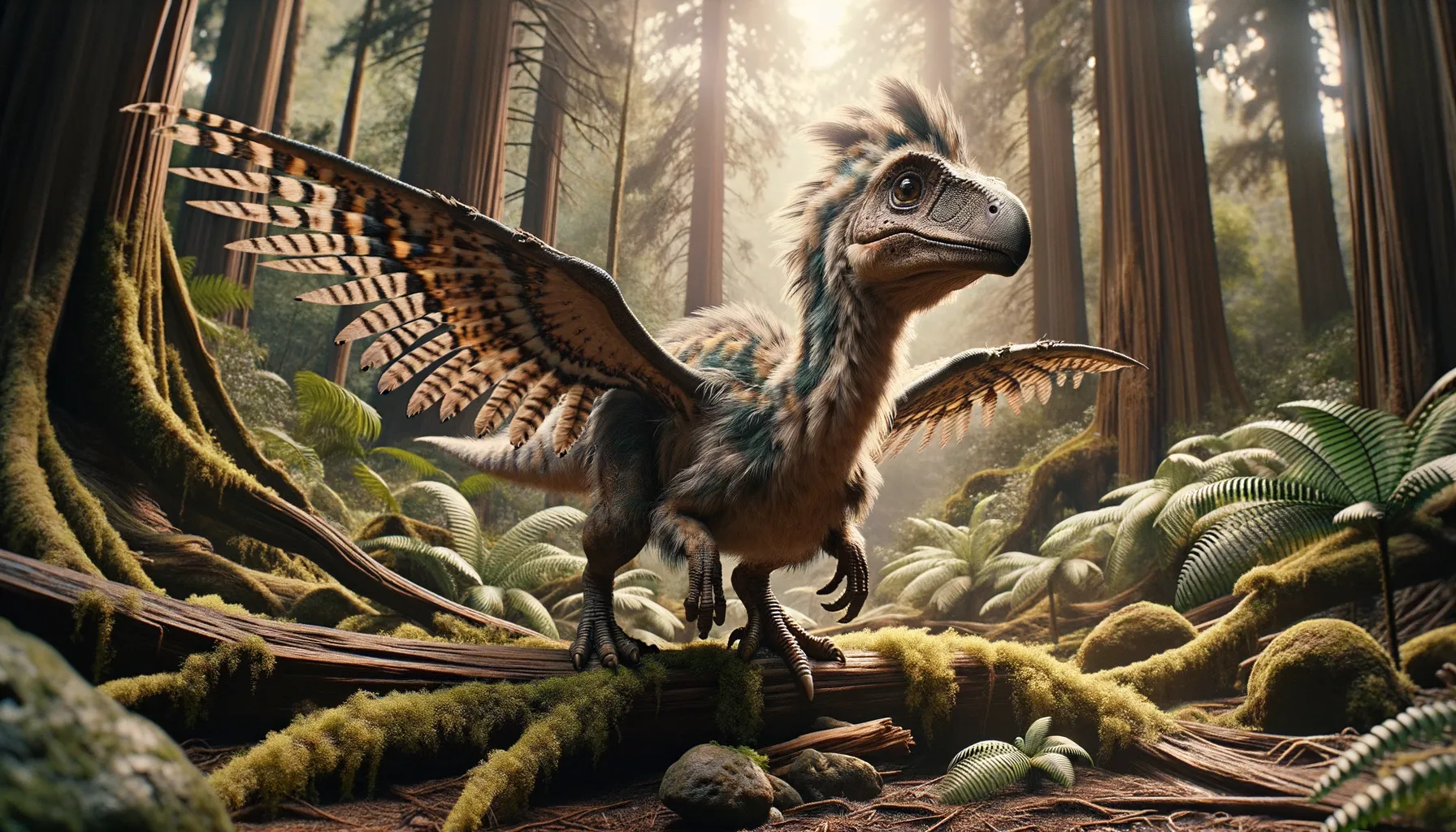
Cryptovolans
A flighted wonder of the ancient skies!
Period
Cretaceous
Length
Approximately 1.2 meters in length.
Height
About 50 centimeters tall.
Weight
Estimated to be around 5 to 10 kilograms.
Cryptovolans was a small, feathered dinosaur that lived during the Cretaceous period. Known for its close resemblance to modern birds, it possessed a unique blend of avian and dinosaurian characteristics, including both feathers and wings. Cryptovolans is often considered one of the earliest known flying dinosaurs, providing significant insight into the evolutionary transition from dinosaurs to birds. Its fossils have primarily been found in the Chinese Liaoning province.
Diet
Cryptovolans likely had a carnivorous diet, feeding on small animals such as insects and possibly small mammals or reptiles. Its sharp teeth and agile flight would have been advantageous for catching prey.
Hunting
As a predator, Cryptovolans might have used its flight capabilities to ambush or quickly pursue small prey. Its hunting style was likely opportunistic, taking advantage of its environment to surprise its targets.
Environmental challenges
During the Cretaceous period, Cryptovolans faced environmental challenges like fluctuating temperatures and changes in flora, affecting prey availability. As forests expanded, it might have needed to adapt to denser habitats. Predators larger than Cryptovolans also posed significant risks, requiring them to rely on their agility for survival. Competition for food with other small theropods could have further influenced its foraging strategies.
Speed
Believed to have been moderately fast due to its bird-like features.
Lifespan
Its lifespan is not well-known but may have been similar to other small theropods.
First discovery
First discovered in the early 2000s in China.
Fun Facts
- Cryptovolans was a small, feathered dinosaur about the size of a crow.
- Its name means 'hidden flyer,' highlighting its capability to glide or maybe even fly.
- Cryptovolans lived during the Late Jurassic period, around 160 million years ago.
- This dinosaur is closely related to the famous Velociraptor, making it part of the Dromaeosauridae family.
- Cryptovolans had long, wing-like arms that were covered in feathers, similar to modern birds.
- Its fossils were found in Liaoning, China, a region known for well-preserved dinosaur remains.
Growth and Development
Cryptovolans likely hatched from eggs, experiencing rapid growth during early life stages. As a small theropod, its development would have been influenced by environmental factors, including food availability. Juveniles may have had different plumage patterns or colors compared to adults, serving as a form of camouflage. Its development possibly included improvements in flight abilities as it matured.
Habitat
Cryptovolans inhabited regions that were rich in forests and small bodies of water, providing ample cover and hunting grounds. The lush environments of the Liaoning province during the Cretaceous provided both resources and challenges for survival. Seasonal changes could have affected prey abundance, requiring adaptability in habitat use. The region's diverse ecosystems supported a variety of small animals that formed its diet.
Interaction with other species
Cryptovolans coexisted with various small and medium-sized dinosaurs, competing with them for similar resources. It likely avoided larger predators through its ability to fly or by staying in dense foliage. Symbiotic interactions might have occurred, such as eating pests or insects that plagued other species. Its presence in the ecosystem likely influenced the dynamics between other small theropods.
Natural lifespan
The natural lifespan is presumed to be relatively short, typical of small theropods.
Reproduction
Cryptovolans likely reproduced by laying eggs in nests, similar to many other theropods of the time. The presence of feathers suggests the possible use of brooding behavior to regulate egg temperature. Eggs would have been placed in a secure location, potentially in trees or hidden under vegetation. Parental care post-hatching remains speculative but may have included feeding and protecting young.
Social behaviour
Cryptovolans might have lived in small groups for better protection and resource gathering, similar to some modern bird behaviors. Social interactions could have included vocalizations or visual displays for communication during mating season or to deter threats. Flock behavior during flight might have provided additional safety and coordination advantages. Its social structures could have been flexible, adapting to environmental changes and group dynamics.
Fossil locations
Fossils of Cryptovolans have been primarily found in the Liaoning province of China, an area renowned for its well-preserved feathered dinosaurs. These discoveries contribute significantly to our understanding of the evolutionary link between dinosaurs and birds. The location provides insights into the environmental conditions Cryptovolans lived in, giving context to its adaptations. The fossils have provided crucial clues about early avian flight evolution.
